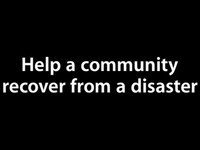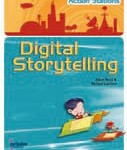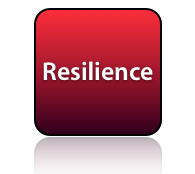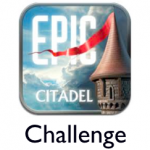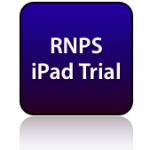Posts tagged Reflection
What Does Challenge Based Learning Look Like?
Jun 17th
IMPORTANT: Please read this post and take a moment to leave a comment and share where in the world you are from. We would like our students to share in the ways their work has impacted upon other communities around the globe. Thank you.
So what does Challenge Based Learning look like?
There is a great deal of interest surrounding Apple’s Challenge Based Learning program due to its potential for creating authentic learning experiences for students. But what is it really? How is it structured? What are the benefits? How do you go about it?
Representatives from Ringwood North Primary School in Melbourne, Australia were lucky enough to be invited to Dallas, Texas in January 2011 to attend a Challenge Based Learning Project with schools from the USA and Canada. To be able to collaborate and work with so many talented and dedicated educators was an amazing experience. But this was only the beginning of our journey.
We were faced with implementing a new program that we were still coming to grips with, a program that needed to cater for 138 Year 5/6 students, kicking off at the very beginning of a school year, a new teaching team and a new building. While waiting for leases and equipment to be finalized, this project was completed without desktop computers or projectors/screens. Fortunately our students have their own iPads - so this really was testing what was possible with these new devices.
We decided to focus on the Big Idea of ‘Resilience’ and after much questioning, came to the Essential Question of ‘How do communities overcome adversity?’ With so many devastating natural distasters occurring in Australia at the time, we felt it was important that our students investigate this topic. In a time of great adversity, the human spirit often shines, and out of something horrible, there are stories and examples of strength and bravery. The final step was to issue a challenge, a statement - ‘Help a community recover from a natural disaster.’
From this point, student groups brainstormed ‘Guiding Questions’ and developed activities to investigate the answers. They then presented their findings to one another.
We setup collaborative working spaces in Edmodo, which was a vital ingredient. This space allowed our students to easily collaborate, share ideas, links, resources and ask one another, not just the teachers, for help. This allowed them to work on the projects when they got the chance to. The way our students are now working within this secure space is amazing. They are taking care with their spelling and punctuation, while being supportive, resourceful and creative - all the while learning about the etiquette of working in a digital environment.
Students then present a number of proposals for their solutions. We set up an interview space where they would run through their ideas, how they were going to measure their successes and what were the steps they needed to work on next. We used Google Docs for sharing these solutions with the students and other groups to ensure we knew where all of the groups were at.
Online galleries were used to share images and videos. Teachers and students became experts at gathering a variety of data, from work samples via the student ePortfolio or website they created, to photos and videos of student learning in progress, to audio and video reflections by the students.
There was such a variety of solutions embarked upon, it was truly inspiring. The students had creative and exciting ways of tackling the challenge - most of which we as teachers would not have come up with or thought possible. Digital books, websites, friendship bracelets, murals, artworks, tree planting ceremonies, bake sales, and book collections were just some of the solutions the students were responsible for.
Once their solutions were implemented, the students began to piece together the evidence of their learning and their experiences to create reflections on their content, process and product.
The key to the project is the questioning and investigation that takes place prior to any solution being implemented. The process is just as important as the content and any product that is produced. Getting our students to reflect along the way and not just at the end of the challenge was also an important part of their projects.
Another key focus is on challenging and supporting the students, getting them to take responsibility and being aware that they may not reach their ultimate goal. This in itself is a lesson to be learnt. If we didn’t complete our challenge, why not? What needs to be done next time to ensure it is achieved?
We have created this film as a snapshot of our journey over the first term through our involvement with Apple’s Challenge Based Learning Pilot Program. This movie was a part of the requirement of being in the program, but has proved to be an amazing snippet of how our students approached this task. It does not have every challenge covered, as it would have turned into a feature film! But hopefully, even with its shaky camera work and rough edges (which was captured and collected by both students and teachers), it manages to capture the spirit of what CBL is all about.
We are so proud of the way our students approached this challenge, and the way in which they have become more aware of life beyond themselves. Their collaborative work, leadership skills and desire to succeed was inspiring. More importantly, it has been the fact they now realise they can do something to help those more unfortunate than themselves, even though they are still in primary school.
Congratulations to our talented students, dedicated teachers and supportive parent community for their enthusiasm and support with this program.
Kids can make a difference!
Technical Stuff:
I have had a number of people ask about the actual making of the movie. Out of interest, the movie was made using flip cameras, iPhone , and a Sony HD camera, the video was edited in iMovie 11 and the music recorded with Garageband. The last music track was my first go at recording real instruments in Garageband on the iPad. Using an iRig, I recorded 4 guitar tracks, a bass guitar track, and then added the drums. The last track took about 20 minutes to finish. Love the iPad!
Reflecting on 2010
Jan 11th

2010 has passed and what an amazing year it was. As I enjoy some ‘analog’ time with the family and recharge the batteries, I thought I would jot down a few of the key events and learnings that I have experienced throughout the year.
Our opinions can change
As teachers, we are sometimes quick to form opinions. Some of the concepts I had formed opinions about have been challenged, some even changed. I think keeping an open mind, listening to other people’s experiences and making time to reflect and process the information are underrated skills.
The focus is back on the learning
While the focus was never really off learning, sometimes I feel that we can be distracted by new tools, programs, software, websites, etc in our desire to engage our students. In our journey into a more Challenge Based Curriculum, where the final product is not always polished or the ultimate objective, I have seen a more productive and exciting working environment. We always refer to the need to engage our students, and often think the tools we use will solve the problem. The answer for me is in how we go about promoting curiosity in the classroom.
One to one & mobile learning
Being fortunate enough to be a part of the Victorian iPad Trial has been a huge opportunity, and I am proud to say that we have not simply placed iPads in students hands and hoped they will do the job. We are changing the way we deliver our curriculum, interact with our 1:1 mobile devices, collaborate with one another, present our learning, assess our students and report to parents. Initially I was not convinced of the collaborative nature of one to one programs, but the iPad has been the perfect vehicle for changing the way I think. The intuitive nature of the software has broken down barriers between generations of students, teachers and parents. Teachers can now get back to creating rich learning tasks that promote curiosity without having to worry about the tech side of it. The kids are using this tool in ways we could not possibly have imagined. By tapping into that, we can learn from the students and empower them.
The mobile nature of learning now truly means students can be using this tool to be accessing and creating content 24 / 7. The way mobile technologies can be used to be better organized and capture authentic learning moments is amazing. The way society is now interacting with their iPhones and iPods, and the range of amazing apps available on Apple’s App Store has changed the way we learn and interact with the web. This is my first post from my 3G iPad, which now allows me to be connected anywhere, anytime.
The role of parents
Parents need a simple and easy way of finding out how their child is going, more than twice a year,and we need to be taking this information to them. The wide varietyof Learning Management Systems around offer schools a way to streamline the delivery of their lessons, track student performance and deliver this information. But does it make sense to parents? Do they have / make the time to log in and view this information, and if so, how much of it do they really understand?
When setting up an LMS, how much of the focus goes into highlighting the
educational benefits of the program, rather than just teaching staff which buttons to press? How many of these systems become a real reflection on student learning and not just another vehicle for assigning activities for students, whether they understand it or not? One of the exciting opportunities for our school with the iPads has been the way in which parents are responding to their child’s work. The iPad lends itself to sharing new learning experiences in a natural and intuitive way. Parents are asked to complete feedback forms on specific projects and return them to their teacher. Parents are sitting down with their child on the couch, viewing and discussing their work with them. They are also given the chance to provide feedback to their teacher on the project, and general thoughts on the use of the iPad. So much more informative, and so much more human!
The power of the PLN
If you are reading this, you probably already have a substantial Professional Learning Network, and have come to appreciate the numerous benefits it offers. I still believe more teachers need to participate in these networks, share their skills, talents and opinions for us all to benefit from.
So, to think of a comment to summarise all of these reflections, I would have to ask the question;
‘With so many amazing tools at our disposal, why are we still transferring old ways of doing things into digital form, rather than truly transforming the way we operate?’
I see this to be our greatest challenge as educators who promote the use of ICT in the classroom.
I hope you have had a sensational holiday and are looking forward to another action packed year. Please keep an eye on my blog at http://applesforkids.org
and my podcast for more about our iPad trial at http://www.applesforkids.net

